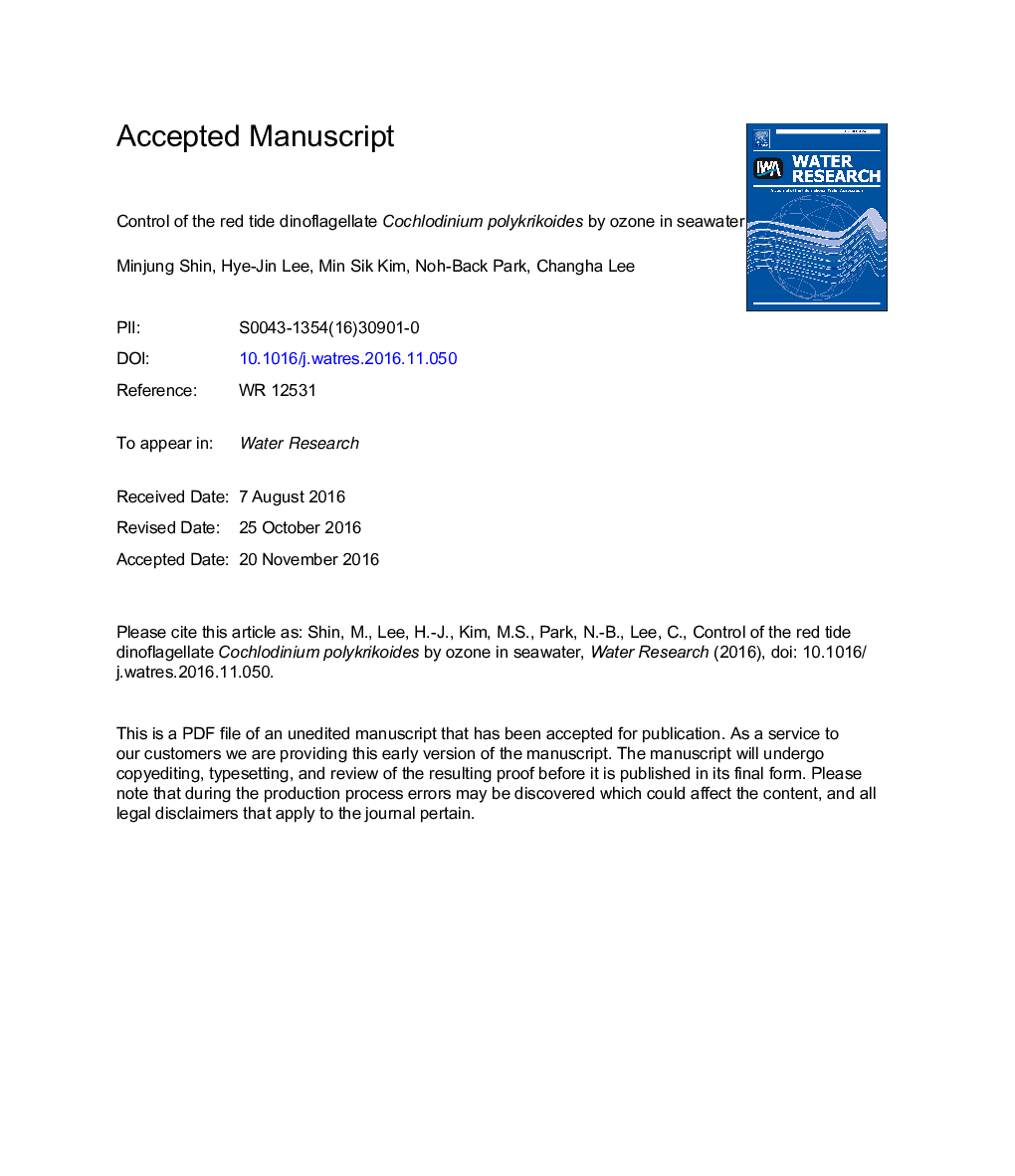| Article ID | Journal | Published Year | Pages | File Type |
|---|---|---|---|---|
| 5759528 | Water Research | 2017 | 29 Pages |
Abstract
The inactivation of C. polykrikoides, a red tide dinoflagellate, by ozonation was investigated in seawater by monitoring numbers of viable and total cells. Parameters affecting the inactivation efficacy of C. polykrikoides such as the ozone dose, initial cell concentration, pH, and temperature were examined. The viable cell number rapidly decreased in the initial stage of the reaction (mostly in 1-2 min), whereas the decrease in total cell number was relatively slow and steady. Increasing ozone dose and decreasing initial cell concentration increased the inactivation efficacy of C. polykrikoides, while increasing pH and temperature decreased the cell inactivation efficacy. The addition of humic acid (a promoter for the ozone decomposition) inhibited the inactivation of C. polykrikoides, whereas bicarbonate ion (an inhibitor for the ozone decomposition) accelerated the C. polykrikoides inactivation. Observations regarding the effects of pH, temperature, humic acid, and bicarbonate ion collectively indicate that the inactivation of C. polykrikoides by ozonation is mainly attributed to oxidative cell damages by molecular ozone, rather than by hydroxyl radical, produced during the ozone decomposition. At high ozone dose (e.g., 5 mg/L), hypobromous acid formed by the reaction of bromide with ozone may partially contribute to cell inactivation. The use of ozone of less than 1 mg/L produced 0.75-2.03 μg/L bromate.
Related Topics
Physical Sciences and Engineering
Earth and Planetary Sciences
Earth-Surface Processes
Authors
Minjung Shin, Hye-Jin Lee, Min Sik Kim, Noh-Back Park, Changha Lee,
